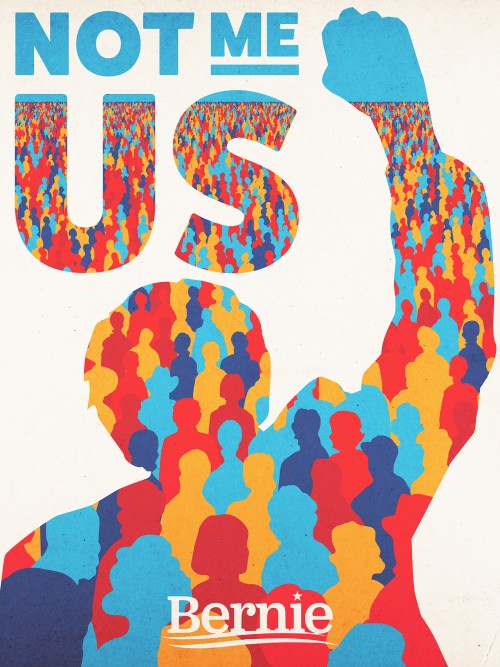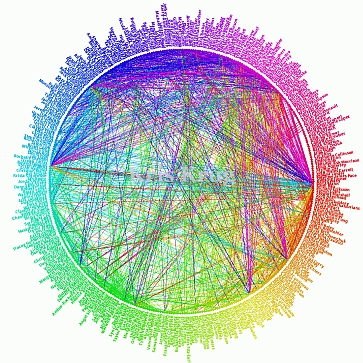 It was the upset that many watching closely were expecting, yet those who lead the mainstream narrative missed completely. As democratic candidate Bernie Sanders brought home a 1.8% victory in a state that average polling was predicting an 18-point win for his opponent, this prevailing narrative has been well and truly shattered. The end result was a 22 point swing in Michigan that political pundit Nate Silver (of FiveThirtyEight) called ‘among the greatest polling errors in primary history’ having previously given Sanders a <1% chance of winning. What was it that caused so many to get it so wrong?
It was the upset that many watching closely were expecting, yet those who lead the mainstream narrative missed completely. As democratic candidate Bernie Sanders brought home a 1.8% victory in a state that average polling was predicting an 18-point win for his opponent, this prevailing narrative has been well and truly shattered. The end result was a 22 point swing in Michigan that political pundit Nate Silver (of FiveThirtyEight) called ‘among the greatest polling errors in primary history’ having previously given Sanders a <1% chance of winning. What was it that caused so many to get it so wrong?
To start to unpick this question, we need to acknowledge the emergence of a new and mobilised politics over most of the last decade. The hyperconnectivity and instantaneous communication of a post-internet age has underpinned this, with citizens becoming more experienced and nuanced in their use of these technologies and a resulting shift in the political sphere accordingly. To name just a few highlights we have the populist 2008 campaign of Barack Obama; the wave of uprising and protest that spanned the globe 2010 – 2012; the ‘pots and pans’ of Iceland; whistleblowing that opened up debate about government surveillance and overreach; alongside numerous divestment campaigns that have been placing growing pressure on institutions and businesses around the world.
Much of the political polling and commentary that got the contest in Michigan so wrong clearly hadn’t grasped the fact that digital activism is now more flexible, faster moving, and inherently more inclusive than before; making it difficult for traditional structures of power to take advantage of these communities disingenuously. Indeed, astroturfing – the use of fake online personas to spread propaganda messages – is becoming a widely understood and therefore less effective method of message control and manipulation. The Sanders campaign, as the major political force that it is, distinguishes itself from such underhanded tactics through transparent and honest messaging; placing the agency of individual citizens at the core of its activity rather than exploiting their participation through hidden agendas and political puppeteering.
Crowd-sourced fundraising efforts highlight the success of such authenticity, breaking records whilst defying established wisdom about how much trust a political campaign can place on a decentralised movement of citizen-led supporters. A new era of politics has arrived, bolstered by a grassroots network that continues to defy expectations. By my rough count, Bernie Sanders has now raised in the region of $150,000,000 without any substantial backing from corporate interests or the wealthiest global elite. 98% of contributions come from individuals, with the vast majority giving small double-digit amounts (with an often lauded $27-ish average). When you compare this to the vested interest super PACs that Hillary Clinton relies upon to be competitive, with over $15,000,000 donated just by the financial sector alone (not to mention her personal speaking fees), you can start to see the stark differences between the two Democratic candidates. These kinds of figures have been stated many times, but it’s worth taking another pause for thought to consider what we’re seeing:
One of the strongest candidates for the world’s most powerful political position is being fully crowd-funded whilst running an anti-establishment, citizen-focused platform of strict corporate accountability and true equal opportunity.
 A massive component of the network that has bolstered the Sanders campaign has been the ability for individuals to participate in online activism – a digital grassroots – in many instances acting alone through dispersed mechanisms of shared political responsibility. It is here that widely-held notions of ‘slacktivism’ (i.e. that people will often express political support through means that have almost zero real impact) are being comprehensively challenged as dial-shifting results are now being seen through increasingly accessible digital mechanisms.
A massive component of the network that has bolstered the Sanders campaign has been the ability for individuals to participate in online activism – a digital grassroots – in many instances acting alone through dispersed mechanisms of shared political responsibility. It is here that widely-held notions of ‘slacktivism’ (i.e. that people will often express political support through means that have almost zero real impact) are being comprehensively challenged as dial-shifting results are now being seen through increasingly accessible digital mechanisms.
Taking this into account, we should thus reject the use of ‘slacktivism’ as a framing device. Replaced instead with a more nuanced view of finely detailed avenues for political participation that are being bolstered by massive boosts in accessibility, efficacy and usability that modern technology provides. A ‘re-enfranchisement gradient’ that is upending commonly held beliefs about political process and citizen engagement.
Fundraising is the most striking result of this new digital surge, and it’s worth noting that the SandersForPresident community on the hugely popular website Reddit has recently crossed over $2,000,000 in attributed donations to the campaign raised by its 200,000+ members. When compared to the less than $10,000 raised at the time of writing by the largest Hillary Clinton community on the site, the impact that digital-native millennials and their generational peers (who overwhelmingly support Sanders) are having on this US election cycle is undeniable. Indeed – Clinton wall street contributions.
Beyond fundraising, we are seeing many forms of low-input/high-return political participation emerging that are empowering individual citizens. It begins with the ability to counter disinformation and share ideological details before moving quickly into areas of direct activism that are easily accessible even to those taking part for the first time. The multifaceted way in which this is occurring should cause us to reconsider the use of ‘slacktivist’ framing that disparages minor examples of digital enfranchisement, because what is occurring points to a much richer gradient of engagement with each level able to contribute in meaningful ways.
This digital grassroots gradient of engagement begins with upvoting of content on user-led platforms such as Reddit, sharing information through social media, and accessing constantly updated news, analysis and responses to key issues. Those who come into contact with Sanders supporters online will then quickly be introduced to the notion of ‘phonebanking’, centralised dialling platforms that are well co-ordinated and easy to use for those willing to take a step further. This layer of activism enables on-the-ground canvassers (those willing to volunteer more substantially) to work with accuracy and also acts as an excellent ‘get out the vote’ (GOTV) tool. Online communities are thus proving to be incredibly effective in facilitating the emergence of grassroots efforts and support networks.
The ability for these communities to focus attention onto specific locations and needs, such as the mobilisation that occurred in Michigan the week before the recent vote, marks a turning point in citizen re-enfranchisement that overcomes many of the drawbacks of a political system that often works against a truly representative democracy. What was also interesting to see, and amazing in hindsight that it hasn’t been more fully utilised in the past, was the rapid emergence of ‘Facebanking’ as a highly accessible, early-gradient extension of the digital grassroots toolkit.
 Facebanking is the use of Facebook to send messages or event invitations to one’s large circle of friends-of-friends in order to GOTV and remind recipients of where they can receive information, deadlines for registering to vote or how they can request rides to local polling stations. Consider it a form of peer-to-peer mobilisation, delivered directly to the location where most people are paying a great deal of personal attention.
Facebanking is the use of Facebook to send messages or event invitations to one’s large circle of friends-of-friends in order to GOTV and remind recipients of where they can receive information, deadlines for registering to vote or how they can request rides to local polling stations. Consider it a form of peer-to-peer mobilisation, delivered directly to the location where most people are paying a great deal of personal attention.
Although it seems like an obvious tool in the political arsenal (indeed, Facebook events have long been used by grassroots campaigns such as the Occupy movement) it is a tactic that has only fully come to light for this election cycle in recent weeks and – because of the inherent digital expertise of millennials – is being very successfully taken advantage of by Sanders supporters in particular. It would be accurate to state, albeit backed mostly by anecdotal evidence, that this tactic significantly boosted voter turnout and was a contributing factor to the surprise results seen in Michigan this week. Indeed, the tactic is evolving and becoming more effective as can be seen from this information post that lists the exponentially growing number of people reached.
What’s fascinating to consider is how an early-gradient activity such as ‘Facebanking’ would be placed by many into the ‘slacktivist’ model. The messages are usually cut-and-paste and require only a few minutes of action and little more than a mouse click – with many proponents not taking their involvement any further. Yet, the tactic gets results and seemingly very powerful ones at that. Those who receive a positive response from their wider peer group are then encouraged to participate in more engaged and time-consuming forms of activism – such as ‘Phonebanking’ – but even those who don’t wish to move further along the gradient have an ongoing and easily implemented tool available to have a true impact on the democratic process.
These early-gradient examples of political participation (viewing, sharing, donating, facebanking) are proving to be incredibly effective, immediately accessible and lead to more committed involvement.
Although the idea of staggered participation is not a new phenomena by any means, the multiplicity of channels now available to be politically active is proving to be effective even for those who want to contribute very little personal sacrifice or practical effort. The campaign being run by Bernie Sanders is showing us that ‘slacktivism’ has been misinterpreted, and that widespread use of technology and generationally-inherent expertise is creating new spaces for political participation that are resistant to attempts to subvert them whilst being highly accessible and inclusive.
Regardless of the outcome of the primaries over the coming months, the political landscape of the United States is changing rapidly because of these new forms of digital grassroots activism. When you add this to the innovative and increasingly assertive efforts of grassroots movements around the world, it’s clear that we haven’t even begun to witness the full force of technologically-enabled citizens and the collective ability to empower ourselves quickly, easily and effectively for true systemic change.
What remains to be seen, though, is whether this new digital grassroots can enable discourse across difference and build the bridges needed to mend an increasingly fractured and antagonistic political spectrum.




